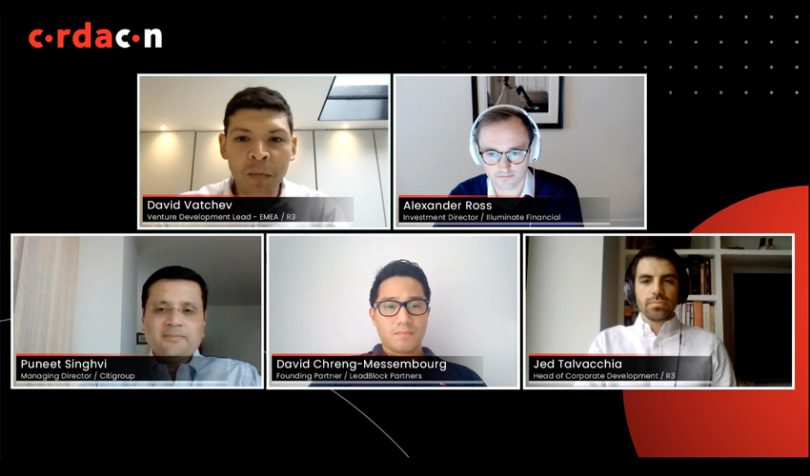Yesterday at R3’s CordaCon event, Citi’s Head of Financial Markets Infrastructures Puneet Singhvi observed two enterprise blockchain trends and the requirements for a good use case.
It’s no secret that getting a blockchain network into production with numerous institutions is no easy task. Singhvi’s first trend is that some networks are now live, with vendors already onboarded. And once that’s the case, it’s much easier to build additional solutions on top of that network.
A prevailing message that came up during several panels was a laser focus on very targeted use cases. Singhvi echoed this sentiment with his second trend.
“Larger scale projects which started with a lot of ambition and requiring a corresponding amount of effort, have taken longer than anticipated,” said Singhvi. “So the solutions that have gone live earlier rather than later, are the ones that are very focused, which have solved immediate problems, and actually driven and shown results.”
What he didn’t explicitly say is that these two trends aren’t entirely separate. Because getting a very targeted solution to market creates that network or platform on which to build additional solutions.
More importantly, success breeds success and openness to new opportunities. That point was palpable during the upbeat panel about the Italian Spunta project. The initiative involves more than 90% of Italian banks, 100 institutions that are in production for automated reconciliations between each other. The group is now exploring what to do as a follow up with this established infrastructure. The project leader was keen to highlight that the network lends itself to experiments with a central bank digital currency (CBDC), but they’re also exploring more mundane solutions.
Four enterprise blockchain requirements
Returning to Citi and Singhvi, the panel discussion was focused on startups. He identified four requirements that also apply to use cases.
“Markets are social in nature. People trade with each other, settle with each other, so a network is very critical. And you need to develop ecosystems around all the solutions for them to actually drive value,” said Singhvi.
“The second part, which is becoming increasingly important is a clear cost-benefit—so understanding where the business case is. We’re not implementing technology for the sake of it. But driving specific benefit, be it on the cost side, be it on the revenue side.”
Singhvi continued: “Making sure that all the requirements are being met, from a legal and regulatory perspective, is critical. And last but not least is the underlying technology.”
He mentioned that Citi has multiple DLT projects in production and others in progress from post-trade processes and trade finance to tokenization.
A fellow panelist from Illuminate Financial observed that a lot is happening behind the scenes when it comes to distributed ledger technology (DLT). The venture capital firm works with major institutions such as IHS Markit and the Deutsche Boerse to get insights into institutional needs. Illuminate’s Alexander Ross noted the tendency to overestimate the impact of technology in the short run but underestimate it in the long run.
“There are some very exciting initiatives going on that aren’t perhaps as visible to people,” said Ross. “And I think in four to five years time we’ll look back and think, wow, the impact this technology has had on enterprise is enormous.”






